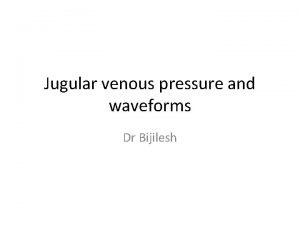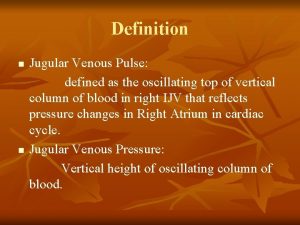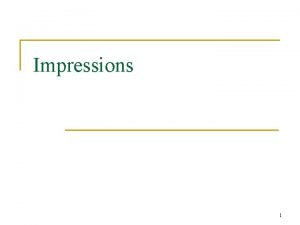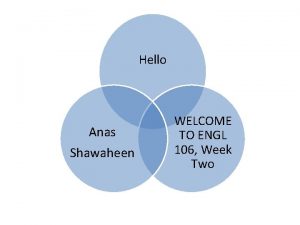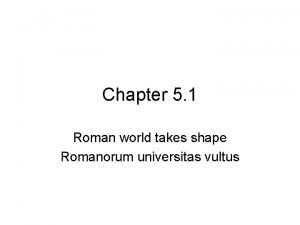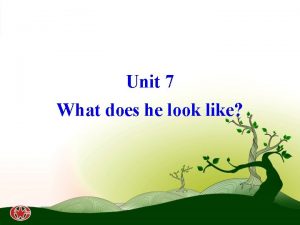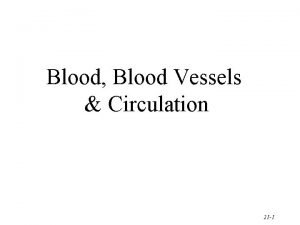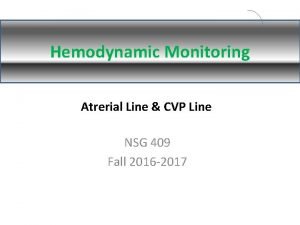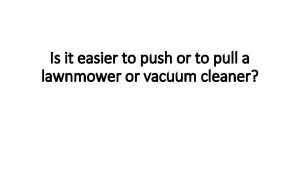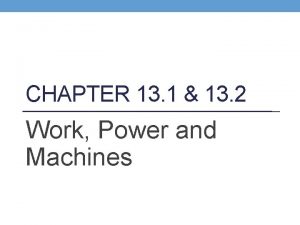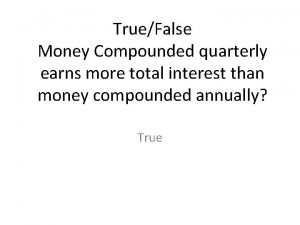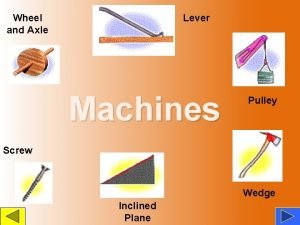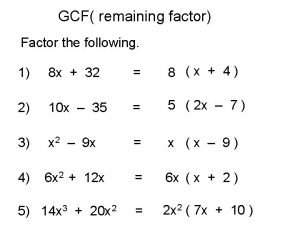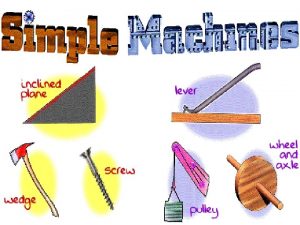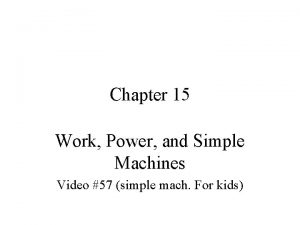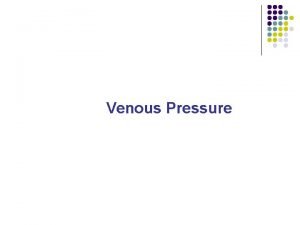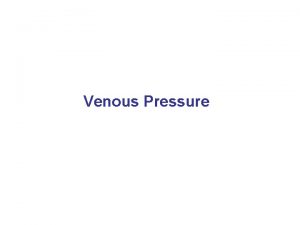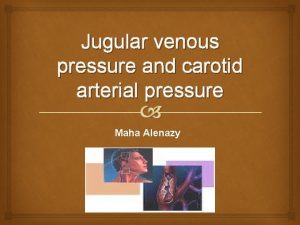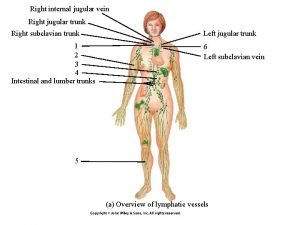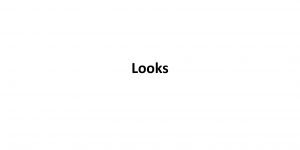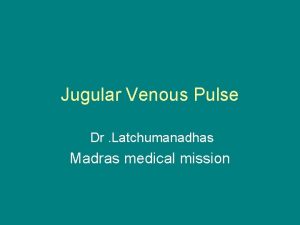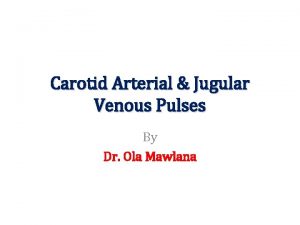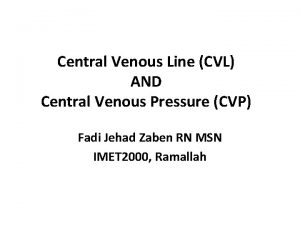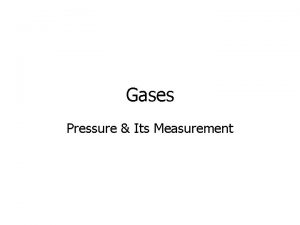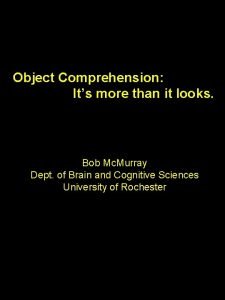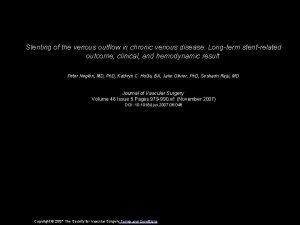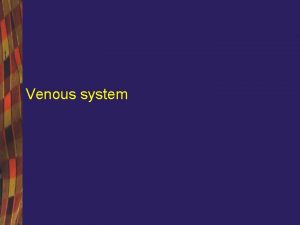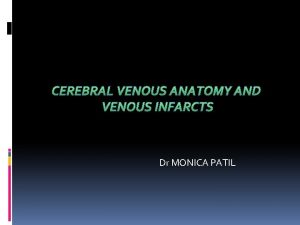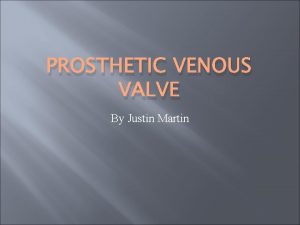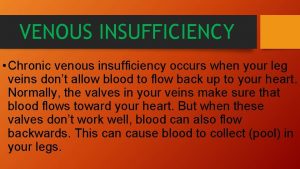Jugular Venous Pressure Its easier than it looks

























- Slides: 25

Jugular Venous Pressure It’s easier than it looks © Continuing Medical Implementation …. . . bridging the care gap

JVP Summary • • • It’s easier than it looks !!! Just never taught properly Look for descents not waves Time deepest descent with systole This is the x' (prime) descent !!! – Occurs during systole due to RV contraction pulling down the TV valve ring “descent of the base” – A measure of RV contractility – If the dominant descent is systolic-this is the x' descentand JVP waveform is normal © Continuing Medical Implementation …. . . bridging the care gap

JVP Inspection © Continuing Medical Implementation …. . . bridging the care gap

Jugular venous pressure • Level of sternal angle is about 5 cm above the level of mid right atrium IN ANY POSITION. • JVP is measured in ANY position in which top of the column is seen easily. • Usually JVP is less than 8 cm water < 3 cm column above level of sternal angle. © Continuing Medical Implementation …. . . bridging the care gap

© Continuing Medical Implementation …. . . bridging the care gap

Normal JVP Waveform • Consists of 3 positive waves – a, c & v • And 3 descents – x, x'(x prime) and y © Continuing Medical Implementation …. . . bridging the care gap

Normal JVP Waveform • a wave - atrial systole • x' (prime) descent !!! – occurs during systole due • x descent – onset of to RV contraction pulling down the TV valve ring atrial relaxation “descent of the base” • c wave - small positive – a measure of RV contractility notch in the 'x' descent • v wave - after the x' due to bulging of the descent - slow positive AV ring into the atria wave due to right atrial in ventricular filling from venous return contraction. • y descent - rapid emptying of the RA into RV due to TV opening © Continuing Medical Implementation …. . . bridging the care gap

JVP Inspection • Look at the JVP and simultaneously feel the carotid or auscultate to identify systole • Say “systole”, “down”, X', X' and look for systolic descent • Descents are easier to see due to greater amplitude and frequency © Continuing Medical Implementation …. . . bridging the care gap

Identifying the Waveform • If the dominant descent is systolic-this is the x' descent-and JVP waveform is normal • The a wave is inferred as the positive wave before the dominant descent • The y descent is sometimes seen but is not as deep as x' descent © Continuing Medical Implementation • The c wave never seen • The y descent sometimes seen – Diastolic descent – Shallower than X' • The v wave is inferred as the positive wave between x' and y • The x descent rarely seen – visible in 1 o heart block …. . . bridging the care gap

JVP- HJR & Kussmaul’s sign • Hepato-jugular reflux (various definitions) – sustained rise 1 cm for 30 sec. – venous tone & SVR – RV compliance • Positive HJR correlates with LVEDP > 15 © Continuing Medical Implementation • JVP normally falls with inspiration • Kussmaul’s sign – – inspiratory in JVP constriction rarely tamponade RV infarction …. . . bridging the care gap

Specific JVP patterns Condition Pattern Normal waveform X' deeper than Y Post CABG X' shallower, now = Y Atrial fibrillation CV wave Tricuspid regurgitation CV wave Complete heart block Irregular cannon A waves Tamponade JVP brisk X' > Y Constriction J VP brisk X' & Y descents X' less exaggerated than Y JVP –low amplitude …. . . bridging the care gap RV infarction © Continuing Medical Implementation

Pulsus Paradoxus • Venous return normally increases with inspiration • Despite this, BP normally decreases by up to 8 mm Hg on inspiration • This paradoxical response is due to: – Increased pulmonary capacitance – Increased negative intra-thoracic pressure with inspiration and – The phase lag between right and left sided events © Continuing Medical Implementation …. . . bridging the care gap

How to measure Pulsus Paradoxus • Pulsus paradoxus is an exaggerated inspiratory fall in BP – Ask the subject to breath normally – Auscultate Korotkoff’s sounds as the BP cuff is slowly lowered. Time respiration simultaneously – Mark when BP sounds are heard only in expiration – Mark when BP sounds are heard both in expiration & inspiration. Korotkoff’s sounds seem to double at this point. – The difference is the measured pulsus paradoxus © Continuing Medical Implementation …. . . bridging the care gap

Pulsus Paradoxus An exaggerated drop in SBP (>10 mm. Hg) with inspiration © Continuing Medical Implementation …. . . bridging the care gap

Tamponade versus Constriction • Tamponade – in tamponade, filling is restricted throughout diastole • Constriction – in constrictive pericarditis, filling is truncated in early to mid diastole • Kussmaul’s Sign – in constriction, venous return increases with inspiration and a high right atrial pressure resists filling resulting in an increased JVP © Continuing Medical Implementation …. . . bridging the care gap

Pulsus Paradoxus Tamponade without pulsus – – – atrial septal defect severe aortic stenosis aortic insufficiency LVH with LVEDP left ventricular dysfunction – decreased intravascular volume (low-pressure tamponade) © Continuing Medical Implementation Pulsus without tamponade – – COPD RV infarct pulmonary embolism effusive constrictive pericarditis – restrictive cardiomyopathy – extreme obesity – tense ascites …. . . bridging the care gap

Central Venous Pressure Cardiac Tamponade Constrictive Pericarditis presence of a rapid Y-descent argues against cardiac tamponade © Continuing Medical Implementation …. . . bridging the care gap

Constrictive Physiology Hemodynamics • End-diastolic pressures – elevated and equalized (<5 mm Hg difference) • RA pressure tracing – rapid X- and Y-descent, “W” or “M” pattern – failure to decrease with inspiration (Kussmaul’s sign) • RV pressure – RVEDP > 1/3 of RVSP – dip and plateau configuration of RVDP (square root sign) • LV and RV pressures – discordant changes © Continuing Medical Implementation …. . . bridging the care gap

Phono-echocardiography Pericardial Knock (early diastolic sound) Venous Pulse (X- and Y-descend) © Continuing Medical Implementation M-Mode Echo (thickened pericardium) …. . . bridging the care gap

Validity of the Hepato-jugular Reflux as a Clinical Test for Congestive Heart Failure John Ducas MD, Sheldon Magder MD, Maurice Mc. Gregor MD (Am J Cardiol 1983; 52: 1299 -1303) © Continuing Medical Implementation …. . . bridging the care gap

Normal JVP • Normal JVP < SA at 45 o • Visible when exceeds 7 cm above reference point in RA = 5 cm < SA • Visible to height 20 cm > SA (25 cm > reference point) • Correlate with CVP 5 -19 mm Hg © Continuing Medical Implementation …. . . bridging the care gap

Methods: • 25 patients studied – 6 with normal resting LV function – 16 with potential bi-ventricular dysfunction – 3 with RV dysfunction • Abdominal pressure 35 mm Hg applied with rolled up manometer • Patient instructed to breath normally • JVP estimated 12 seconds after compression • Hemodynamics, esophageal and gastric pressure recordings obtained simultaneously © Continuing Medical Implementation …. . . bridging the care gap

Validity of the HJR as a Clinical Test for CHF • In patients with normal LV function abdominal compression did not increase > 2 mm Hg (2. 7 cm H 2 O ) • In 16/19 patients with impaired ventricular function CVP increased by > 3 mm Hg (4 cm H 2 O) • CVP stabilized over 12 seconds and did not change over subsequent 60 seconds • An increase of 3 cm H 2 O (2. 2 mm Hg) in the height of the neck veins is a reasonable upper limit of normal for HJR John Ducas MD, Medical Sheldon Magder MD, Maurice Mc. Gregor MD © Continuing Implementation (Am J Cardiol 1983; 52: 1299 -1303) …. . . bridging the care gap

The Abdominojugular Test: Technique and Hemodynamic Correlates Gordon A. Ewy MD (Annals Int Med 1988; 109: 456 -460) © Continuing Medical Implementation …. . . bridging the care gap

Results: • PCW mean 10. 5 +/- 1 mm Hg in patients with negative HJR • PCW mean 19 +/- 3 mm Hg in patients with positive HJR • Positive HJR correlated with PCW > 15 mm Hg © Continuing Medical Implementation …. . . bridging the care gap
 Why its easier than ever
Why its easier than ever Absent y descent
Absent y descent Jvp curve
Jvp curve Which is not a class characteristic of a suspect's sneaker?
Which is not a class characteristic of a suspect's sneaker? Communication-it's much easier than done
Communication-it's much easier than done Why is gas easier to compress than liquid and solid
Why is gas easier to compress than liquid and solid Why was italy easier to unify than greece
Why was italy easier to unify than greece Why was italy easier to unify than greece
Why was italy easier to unify than greece Who does he look like
Who does he look like What he looks like or how he looks like
What he looks like or how he looks like Fenestrations
Fenestrations Cvp normal range
Cvp normal range Cvp waveform
Cvp waveform Seesaw
Seesaw Is anything that helps make work easier
Is anything that helps make work easier Fbd
Fbd How does a wedge make work easier
How does a wedge make work easier A method to make regular saving easier is ____.
A method to make regular saving easier is ____. How do machines make work easier
How do machines make work easier Lever inclined plane wheel and axle
Lever inclined plane wheel and axle Which was easier finding the remaining factor
Which was easier finding the remaining factor Geography of sw asia color by number
Geography of sw asia color by number An easier way to choose contrasting structures is to pick
An easier way to choose contrasting structures is to pick How do pulleys make work easier
How do pulleys make work easier Device that makes doing work easier
Device that makes doing work easier Effforce
Effforce

